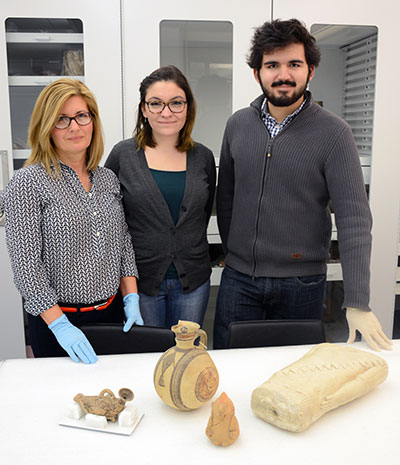
In 1934, Penn archaeologists George McFadden and John Franklin Daniel began excavating at Kourion, Cyprus. More than 80 years later, as part of the Provost’s Year of Discovery, student curatorial interns Diane Panepresso, Ashley Terry, and Andrés de los Rios have created an exhibition incorporating the artifactual and archival materials from these excavations.
The exhibition-building process turned into a process of discovery in its own right. Under the supervision of Associate Curator Ann Brownlee, the student curators explored the Museum’s Cypriot collection, selected objects, and also looked over letters, journals, and drawings in the Museum Archives. In the process, the exhibition came to be about people: the ancient inhabitants of Kourion and Penn’s mid-20th-century excavators. In subsequent research, a secondary theme emerged: the potential of artifacts and objects to contribute to continuing discovery. The exhibition draws not only upon narratives of discovery from the journals and notes of Kourion’s excavators, but also the present-day discoveries made possible by technology. Diane, Ashley, and Andrés engaged the latter theme by conducting microscopic analyses of artifacts in the Center for the Analysis of Archaeological Materials.
The resulting exhibition will ideally acquaint the visitor with the lives of the people of ancient Kourion from Neolithic to Roman times, as well as to past and modern stories of discovery, both in the field and in the lab.
